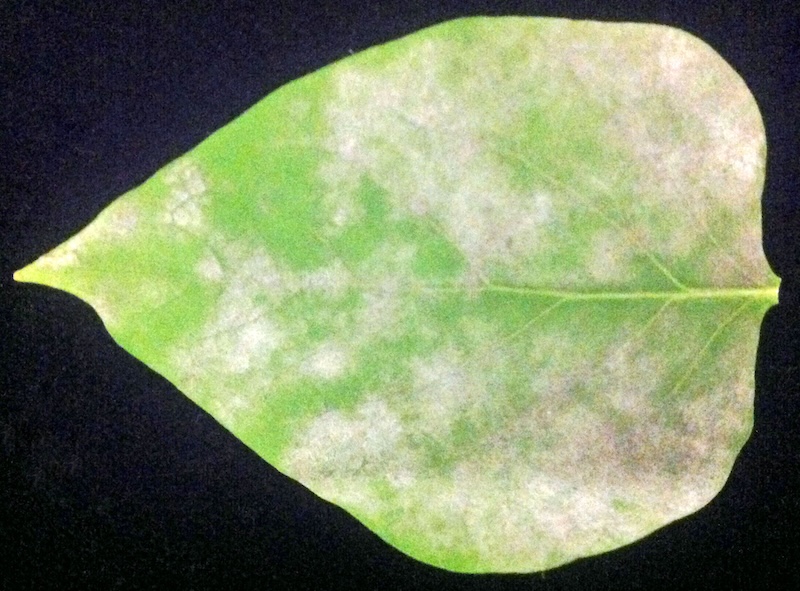Lilacs are low-maintenance shrubs that rarely encounter diseases, although a few can be problematic. Bacterial and fungal infections can impact the health of the plant and have severe consequences if left untreated. Learn how to identify common lilac diseases and properly treat them.
Lilac Ascochyta Blight
Ascochyta blight first emerges in the spring when the plant wakes up from dormancy. If left untreated, this fungal infection will continue to spread throughout the plant during the summer and fall. Ascochyta blight can overwhelm small lilac shrubs, or severely impact large, established plants. Lilacs infected with Ascochyta blight can die if the condition is left untreated.
Identifying Ascochyta Blight
When a lilac has Ascochyta blight, new growth will appear wilted and brown. Eventually, the points where the infected branches connect to the shrub will become shriveled and gray. Raised fungal structures will emerge on the dead growth. Tan leaf spots can appear on foliage during the summer and fall.
Treating Ascochyta Blight
The most effective method to treat Ascochyta blight is immediately removing the infected areas. Trim infected branches using clean, sharp pruning shears. Safely dispose of the infected branches and avoid spreading the fungus. Treat the remaining branches with a fungicide. Avoid watering the plant from above, and water the ground when necessary.
Lilac Powdery Mildew
Powdery mildew is a fungal infection that can impact lilacs and various landscape plants. The fungus thrives when nights are cool and days are warm. Plants spaced too close together with poor airflow are more likely to become infected. Left untreated, powdery mildew can kill foliage and stunt growth, and rarely will kill a lilac plant.
Identifying Powdery Mildew
Powdery mildew appears as a dry, white coating on the foliage. The mildew completely engulfs the surface of infected leaves and is visible from far away. New foliage will become distorted, and eventually, infected leaves will wilt and die.

Photo by Scot Nelson
Treating Powdery Mildew
Treat a lilac shrub infected with powdery mildew by applying a fungicide or a mixture of baking soda, dish soap, and water. Coat the entire plant to treat the infected leaves and prevent the mildew from spreading to healthy foliage. Prevent future powdery mildew outbreaks by ensuring plenty of space around each shrub when planting and routinely pruning and thinning dense branching. Improved air circulation will combat powdery mildew. Water the shrub regularly because a hydrated shrub is less likely to get sick.
Lilac Bacterial Blight
Bacterial blight is an infection caused by bacteria that quickly spreads throughout a shrub and can infect nearby plants. Plants grown in close quarters and humid environments are more likely to be impacted by bacterial blight. Shrubs left untreated can sustain significant foliage loss, ultimately killing the plant in severe cases.
Identifying Bacterial Blight
Bacterial blight appears as wilted foliage that remains attached to the shrub but turns brown or black. New growth immediately withers. Flower buds turn black, and the entire flower cluster will become limp and die.
Treating Bacterial Blight
The first step to treating bacterial blight is to remove the infected areas. Trim the lilac using clean pruning shears. Clean the shears when done to prevent spreading the bacteria. Burn or properly dispose of the infected branches. Spray the shrub with a horticultural oil and avoid overhead watering.
Lilac Disease Chart
| Disease | Identifying | Treating |
|---|---|---|
| Ascochyta Blight | Wilted new growth and tan leaf spots | Prune/discard stems and treat with fungicides |
| Powdery Mildew | White spots on leaves | Fungicide & air circulation |
| Bacterial Blight | New growth wilts and dies; flower buds turn black | Prune/discard stems and treat with horticultural oil |
Sources: "Lilac Diseases." PennState Extension. extension.psu.edu
 |
Author Alison Cotsonas - Published 12-21-2023 |
